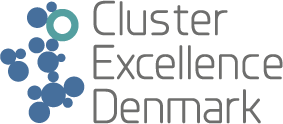Denmark’s 13 national clusters
What is a cluster?
The central role of clusters
The cluster organisation
Cluster history
Denmark’s 13 national clusters
What is a cluster?
The central role of clusters
The cluster organisation
Cluster history
The Danish clusters
Cluster history
The current cluster effort in Denmark is based on nearly 20 years of results and experience – gained by companies, knowledge institutions, local authorities, counties and the state in innovation networks and cluster organisations through the years.
The Danish cluster landscape of today looks remarkably different than it did just a few years ago. The reforms and strategy processes of recent years have led to fewer, but larger and stronger cluster organisations in Denmark.
Since 2003, the development in the cluster area has gone from regional growth environments over technology centres, innovation networks and more formalised regional clusters to the current landscape of primarily 13 national clusters.

Consolidation of the cluster landscape
As a part of the business promotion strategy from 2019, the Danish Board of Business Development selected Denmark’s strongest and most promising business and technology areas. The intention was to concentrate the publicly funded cluster effort in fewer and stronger clusters.
At that time, Denmark had app. 40 publicly funded clusters and innovation networks of which several operated in the same field, typically in different parts of the country. As a consequence of the new strategy, the 40 clusters and innovation networks had to be reduced to 12-14 and made nationwide and accessible for companies throughout the country.
The consolidation process culminated in october 2020 when 14 new national, publically funded cluster organisations were selected. In January 2021, they were ready to shorten the path between researchers and companies and secure knowledge to growth in the whole country.

